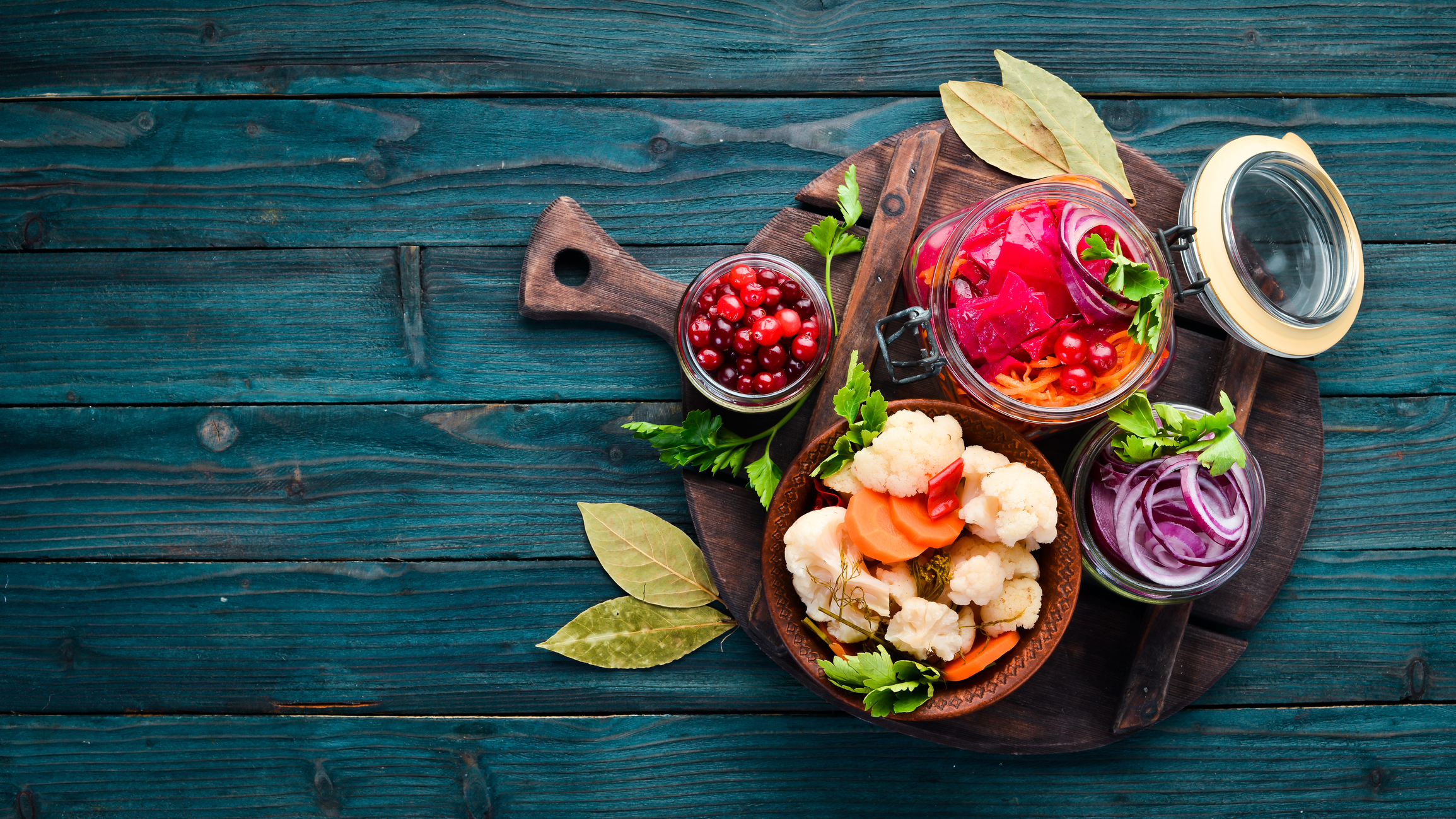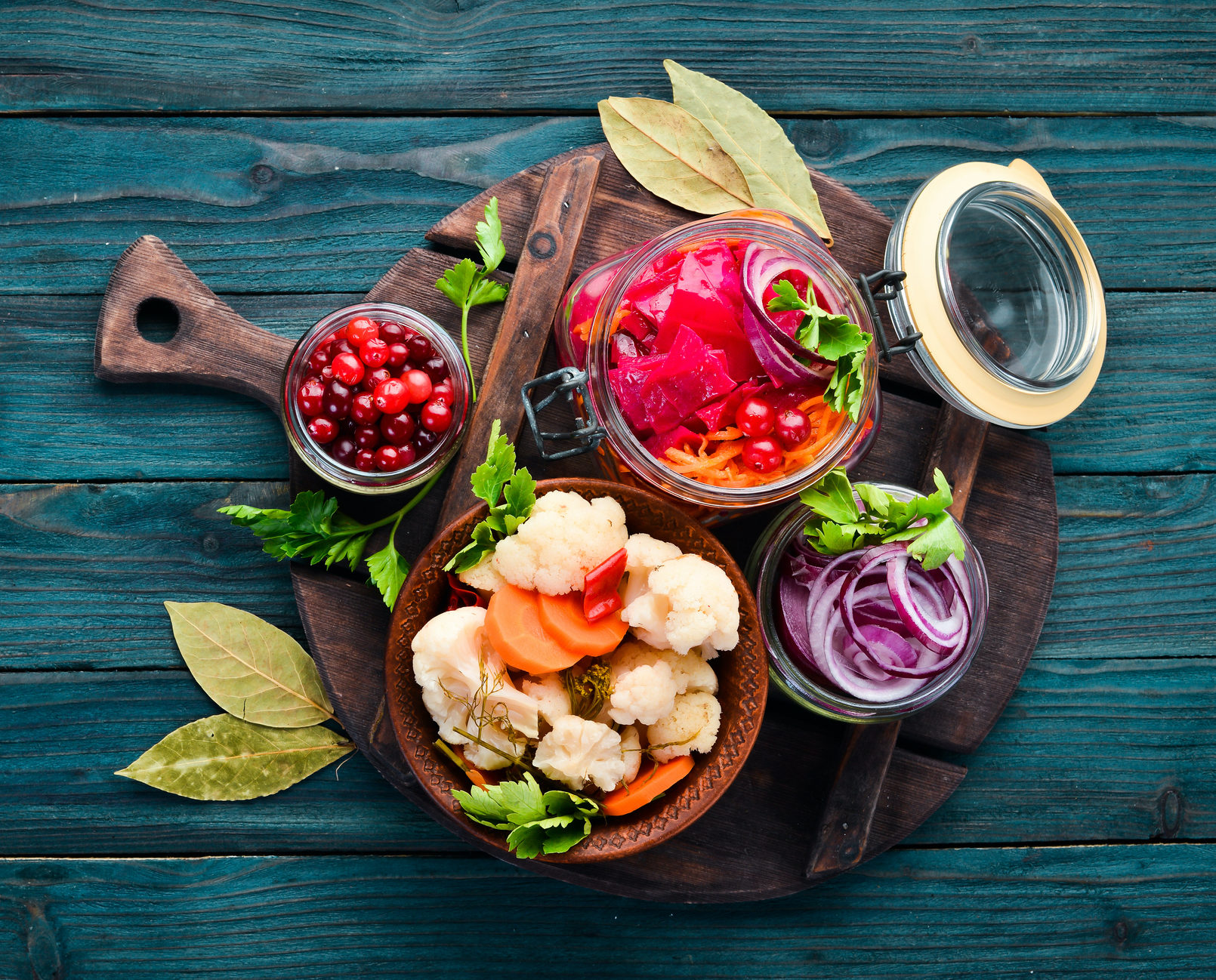The benefits of fermented foods are amazing, but sometimes it is hard to know how to incorporate them into your everyday life. Of course, we’ve all heard that the combination of bratwurst and sauerkraut is a winner, or we could always eat it by the forkful, but that can get boring.
This savory salad is a perfect way to mix things up while still adding the benefits of fermentation to your everyday diet.
Before we get to the recipe, let’s cover some of the fantastic benefits that sauerkraut has to offer.
THE HEALTH BENEFITS OF SAUERKRAUT
Sauerkraut gets its name from Germany, where it is enjoyed as a popular side dish. But before Germany, it probably originated in China more than 2,000 years ago.
Due to the fermentation process, sauerkraut offers nutrition and health benefits far beyond those found in fresh cabbage. Sauerkraut provides high doses of vitamin C, vitamin K, iron, and manganese along with beneficial enzymes and probiotics, which make food more digestible and the nutrients in them more accessible.
The probiotics in sauerkraut can help improve the beneficial bacteria balance in your gut, reducing gas, bloating, constipation, diarrhea, and other irritating digestive issues.
The more beneficial bacteria you have in your gut, the more robust your immune system will be. So, one might say that eating a diet rich in fermented foods could contribute to your ability to fight off infections.
Beneficial bacteria are shown to have a positive effect on the function of our brain. Research has found that certain bacteria help improve memory1 and lower symptoms of anxiety2, depression3, and other mood disorders.
SHOPPING FOR SAUERKRAUT
You can find sauerkraut easily in most supermarkets, but not all types are equal.
To ensure you get the most out of store-bought sauerkraut, keep these tips in mind:
Avoid pasteurized varieties: Off-the-shelf sauerkraut will be pasteurized, a process that kills the beneficial probiotics. Refrigerated types are less likely to be pasteurized, but check the label to be sure.
Avoid preservatives and added sugars: Many store-bought sauerkraut brands contain preservatives, which will lower the probiotic count. Some varieties may include extra added vegetables, but avoid those with added sugar. Read the label and look for only two simple ingredients: cabbage, sea salt.
SAVORY SAUERKRAUT SALAD RECIPE
INGREDIENTS
- 2 c riced cauliflower, steamed
- 1 c parsley, chopped
- 1 c cilantro, chopped
- ¼ c fresh basil, chopped
- ½ red bell pepper, diced
- 1 c cherry tomatoes, quartered
- Zest and juice of 1 lemon
- ¼ c olive oil
- ¼ c roasted pumpkin seeds*
- 1 c sauerkraut (use a homemade or raw store-bought brand)
- Sea salt to taste
DIRECTIONS
- Prepare Roasted pumpkin seeds. (recipe below)
- Prepare the cauliflower by placing in a steamer basket, allow to steam until tender about 7-10 minutes.
- While cauliflower is steaming, prepare the herbs, tomatoes, and bell pepper. Toss together in a serving bowl.
- Drizzle lemon juice and zest and olive oil over the herbs and veggie mixture. Toss in the sauerkraut. When the cauliflower is steamed gently toss that in as well as the roasted pumpkin seeds. Add sea salt to taste if desired.
ROASTED PUMPKIN SEEDS
INGREDIENTS
- 1 c shelled raw pumpkin seeds
- 2 c water
- 1 T sea salt
- 2 t coconut oil
DIRECTIONS
- Preheat oven to 300°.
- Place seeds into a medium saucepan. Add water and salt. Bring seeds to a boil. Cover and let simmer for 10 minutes. While seeds are simmering, place coconut oil on a cookie sheet, put in oven, and allow oil to melt.
- Remove seeds from heat and drain. Spread oil evenly around the pan, and add the seeds onto the oil in a single layer. Leave seed plain or add some seasonings. (Some of our favorites are pepper, curry powder, chili powder, cumin, turmeric, and ginger.)
- Bake on center rack until the seeds begin to brown, about 5-15 minutes depending on the size of the seeds. Stir seeds every 5 minutes. Keep an eye on them so they don’t get over toasted.


+ show Comments
- Hide Comments
Free Resources
Take A Look at the latest from ITN:
Courses
add a comment